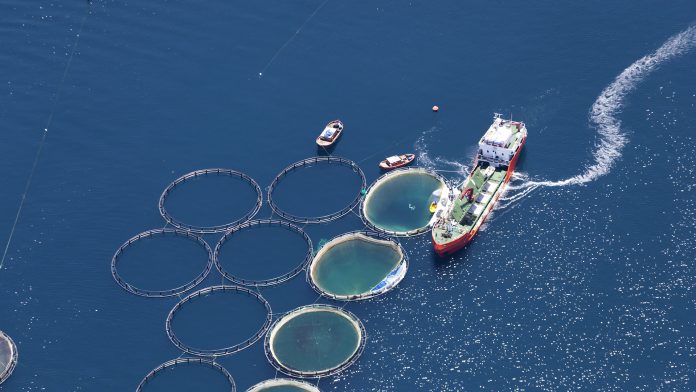An article published in PLOS Biology this week calls for changes in marine aquaculture systems, arguing this will help meet nutritional needs and reduce the ecological footprint of food production.
The article, titled ‘Transforming marine aquaculture from the bottom up for a sustainable future’, details the growth of the world population and how current food production methods cannot account for the population spike.
The authors present shifting the focus of aquaculture down the chain to algae. They have said this could solve the growing demand for nutritious food, while also reducing the carbon footprint of the current food system.
The food production system’s negative impact on the climate
Increasing the production of fisheries to meet consumer needs has negative impacts on climate, land use, freshwater resources, and biodiversity.
With the world’s population approaching 10 billion people by 2050, global food production will need to increase by around 50% to meet humanity’s projected nutritional demand. Terrestrial agriculture currently provides the majority of the food production system; however, its potential to address the projected nutritional gap is constrained by its negative impacts on the climate.
Scientists are exploring a variety of alternative food options to determine how society may incorporate sustainability into the food system. These include the cultivation of finfish, shellfish, and seaweeds. However, a vast expansion of the current aquaculture systems would run out of available space in the coastal ocean before closing the nutritional gap. Additionally, expansions to the current system poses significant environmental threats and conflicts with stakeholders.
Because of these issues, the paper determines that turning to marine aquaculture in the form of algae would be a viable option for sustainable food production. Microalgae may provide high amounts of nutritional protein, essential amino acids, and other micronutrients, such as vitamins and antioxidants.
Moreover, a microalgae-based marine aquaculture industry would not require arable land and freshwater, nor would it pollute freshwater and marine ecosystems through fertiliser runoff.
The potential use of microalgae to meet nutritional demands
According to the authors, “The financial headwinds faced by a new microalgae-based marine aquaculture industry will be stiff, because it must challenge incumbent industries for market share before its technologies are completely mature and it can achieve the full benefits of scale.
“Financial investments and market incentives provided by state and federal governments can help reduce this green premium until the playing field is level. The future role of algae-based solutions in achieving global food security and environmental sustainability will depend on the actions taken by governments today.”
Charles H Greene, who led the study, added: “Agriculture provides the backbone of today’s global food production system; however, its potential to meet the world’s nutritional demands by 2050 are limited. Marine microalgae can help fill the projected nutritional gap, while simultaneously improving overall environmental sustainability and ocean health.”









